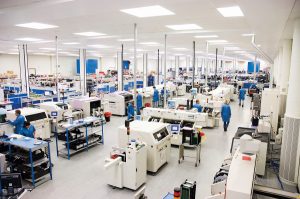 Over the years, India, as an investment destination, has witnessed renewed interest among global as well as domestic EMS players.
Over the years, India, as an investment destination, has witnessed renewed interest among global as well as domestic EMS players.
By Sudeshna Das (with inputs from Baishakhi Dutta)
The Indian electronics industry has emerged as one of the fastest-growing segments in the country. Demand for electronics has been rising constantly and is estimated to reach a market size of US$ 400 billion by 2020. Of this, electronics manufacturing service (EMS) is expected to contribute a significant share.
Over the years, India, as an investment destination, has witnessed renewed interest among global as well as domestic EMS players. According to a Frost & Sullivan report, the Indian EMS market is expected to reach a market size of US$ 7.92 billion by 2018. The Indian government is also making earnest efforts to increase domestic manufacturing levels to seize the enormous opportunity presented by the industry.
Considering the importance of EMS, we decided to take a holistic look at how the growing demand impacts this industry. We asked a few questions to senior stakeholders from within the industry as part of our monthly industry poll. In this article we try to get the pulse of the EMS industry in India.
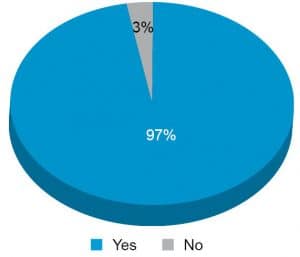
Opportunities galore
Among the survey participants, 97 per cent predict (Fig. 1) that the EMS market in India will be highly dynamic in 2017 since India promises to emerge as a hotspot for electronics manufacturing among the existing South-Asian nations. This is because of benefits like low operating costs and low competitive scenario, which provide ample potential for penetration by original equipment manufacturers (OEMs) and EMS providers across different sets of verticals.
Survey participants indicate that the top three growth-driving application sectors (Fig. 2) that will need EMS providers in the country will be:
- LED lighting
- Telecom and mobile devices
- Consumer electronics
Manufacturing partnerships in these segments have been growing steadily, as market demand for the products is very high and OEMs are striving to cut costs to maintain their competitive advantage in the face of rapidly-changing market conditions, technological advances and global competition.
There are opportunities for EMS providers outside these three segments, namely, in medical and strategic electronics (including aerospace, defence and railways). According to survey participants, demand for EMS in medical electronics is totally driven by high market demand for medical electronics products. This is because people are becoming health conscious and average life expectancy rate has increased. Moreover, the medical electronics segment is not impacted by any economic reform.
Aerospace and defence OEMs have been increasingly depending on EMS providers to address risk management, logistics and aftermarket service needs. EMS companies that have a global supply chain and advanced technological capabilities can easily exploit this trend.
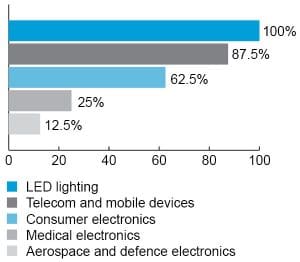
Riding high on policy booster
Survey participants have mentioned that the EMS industry in India is expecting significant benefits from ‘Make in India’ campaign in the days to come. Global players have already started showing interest in investing in India. This, coupled with the government’s assurance to provide assistance to the electronics industry for setting up world-class infrastructure, is expected to provide the much-needed momentum to domestic manufacturers.
This campaign, which is backed and fully supported by Defence Procurement Policy (DPP) 2016, Preferential Market Access (PMA) Policy and incentives like MSIPS, has attracted OEMs to explore the option of manufacturing in India. This, in turn, will create more business opportunities for Indian EMS players in the times to come.
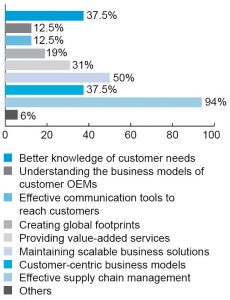
Industry dynamics
EMS companies operate as strategic partners of OEMs by providing them with a full range of services that include contract design service, prototyping, final system assembly, configuration, order fulfilment and after-market services including repair. By using the services of EMS providers, OEMs can concentrate on their core competencies such as research and product development, brand building, and sales and marketing.
Outsourcing to EMS providers also enables OEMs to gain access to the latest equipment, process knowledge and manufacturing know-how without having to make substantial capital investments, as the risks are converted into variable costs.
Survey participants feel that ever-increasing end-user demands and fast-paced technological developments compel OEMs to continuously introduce new and innovative products in the electronics market. Consequently, OEMs have to increasingly depend on EMS providers who offer significant benefits such as cost savings, reduced time-to-market, reduced time-to-volume, quality and flexibility.
While discussing the market mix, all survey participants have indicated the long shown affinity of the Indian EMS providers towards a low-mix, high-volume module, which is a contract manufacturing setup where only a few number of assemblies are produced in large quantities. Such a production arrangement may last for weeks or even months using the same setup.
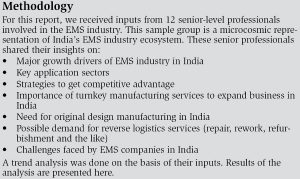 This technique allows changeovers to be kept at minimum levels and equipment utilisation rates to be significantly high. Contract manufacturers have proven to be more efficient when running at high volumes, which requires minimal engineering changes. This pattern is mostly prevalent in India as EMS companies are driven by the high volume quotient of this proposition. Considering the low margin scenario, optimisation of supply chain cost is crucial to the success of this model.
This technique allows changeovers to be kept at minimum levels and equipment utilisation rates to be significantly high. Contract manufacturers have proven to be more efficient when running at high volumes, which requires minimal engineering changes. This pattern is mostly prevalent in India as EMS companies are driven by the high volume quotient of this proposition. Considering the low margin scenario, optimisation of supply chain cost is crucial to the success of this model.
While the low-mix, high-volume method of production is adopted by EMS companies catering to the mass-manufacturing segment, the recent industry trends show a shift towards a high-mix, low-volume production process, which puts high focus on quality and customisation as per customer requirements.
Considering high margins and niche market scenarios, even major changes in market dynamics often do not impact such a production process heavily. This kind of production arrangement mostly caters to the strategic electronics sector, and the emphasis is on faster throughput and high-quality finished product. OEMs that prefer such solutions are willing to pay a higher price without compromising on quality. However, in this model success depends on controlling and improving supply chain efficiently.
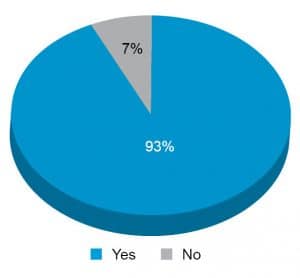
Growth strategies
Since OEMs are very selective in choosing their EMS partners, the latter need to focus on nurturing long-term relationships with their customers through enhanced value-added services, strategic partnerships and alliances, as well as through diversification.
In response to growing competition in the industry, EMS providers continuously adopt innovative and strategic business models. These include better knowledge of customer needs, understanding the business models of customers/OEMs, effective communication tools, creating global footprints and focusing on core competencies.
According to survey participants, the top-three business strategies (Fig. 3) to get a competitive advantage while acquiring business in the consumer electronics segment are:
- Effective supply chain management
- Maintaining scalable business solutions
- Better knowledge of customer needs and customer-centric business models
EMS providers should also focus on penetration into niche markets and effective information technology tools.
Moreover, considering the intense competition, participants feel that EMS providers need to enhance their value proposition by offering integrated and end-to-end solutions. They also suggest that a strategic partnership with OEMs can enable EMS providers as well as OEMs to contribute effectively to the success of the end product. This, in turn, will help both the parties to achieve high profitability and good market share.
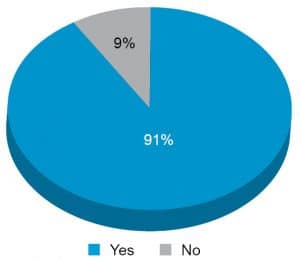
One-stop shops are in demand
Survey participants unanimously accept the importance of turnkey manufacturing services, as the need of the hour is to fulfil the increasing demand for one-stop shops for EMS in the consumer electronics segment.
Sometimes, OEMs follow the consignment contract manufacturing model to maintain greater control over material planning and the acquisition process. This also minimises the risks associated with a vendor-managed pipeline.
A common best practice among OEMs is to have systems that can analyse the total acquisition cost and use it to evaluate EMS suppliers as well as other types of contract manufacturers. These systems assign values to intangibles such as ease of working with a vendor. An OEM assessing an outsourcer must have a way to measure the other elements of the relationship that add to cost.
Turnkey projects need a high degree of technical skills that can be customised according to specific requirements of the OEMs. Only a few Indian EMS providers offer turnkey solutions for PCBAs, utilising chip-on-board, surface mount and through-hole technologies. They also provide complete assemblies including plastic mouldings, metal-die castings and sheet metal fabrications, apart from finishing, painting and printing—in short, deliver the final assembly of completed units. This opens up vast business expansion opportunities for Indian EMS companies.
Original design manufacturing gains importance
Electronics products need constant design revisions as end users expect creativity and continuous innovation. Therefore consumer electronics product design and development is often outsourced to original design manufacturers. In such cases, the sooner an OEM engages the contract manufacturer for product design and development services, the better—particularly when the product being designed moves into production and ramp-to-volume phases.
In instances where the original design manufacturer is hired by the OEM for strategic reasons, the former is expected to have experience in designing and manufacturing similar products. This enables the OEM to minimise costly design iterations, helps bring the OEM product to market sooner and adds several other benefits to the contract manufacturing relationship.
Among the survey participants, 93 per cent (Fig. 4) have indicated that services of original design manufacturers are in demand. They feel that it is important to effectively control overall manufacturing costs in the highly cost-competitive market.
EMS providers can help customers achieve this goal by offering turnkey solutions with value-added services. Design is the best value-added service that an EMS company can provide. Hence, original design manufacturer services become a very important and cost-effective solution for customers.
However, seven per cent of survey participants do not see any value of original design manufacturers in the Indian market. They feel that Indian products need efficient manufacturing strategies rather than original design manufacturers.
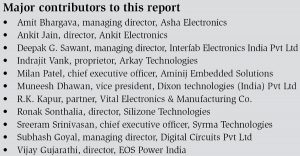 Scope in reverse logistics
Scope in reverse logistics
India is still not a use-and-throw market for consumer electronics products. After-sales services including repair and maintenance are quite important for the Indian consumer. Echoing this view, 91 per cent (Fig. 5) of participants have said that additional scope for business lies in the area of reverse logistics. They feel that services related to repair/reworking and refurbishment work will not only help EMS firms get additional business from OEMs but also enable them to play a role in e-waste management. However, considering the complexity of reverse logistics processes, only a few expert EMS providers in India can enter this space.
The way ahead
We asked the participants to suggest possible challenges that could derail the growth of this industry in India. Here is a collation of their concerns:
- Unorganised nature of the sector puts cost pressures on quality service providers and creates issues in the entire value chain
- Inefficient supply chain for required electronic components is a major concern
- An unfair playing field, since companies from competing countries (China, Vietnam, Indonesia, etc) have access to finance at much lower costs
- Logistics inefficiencies and infrastructural bottlenecks, resulting in greater turnaround time and costs
- Higher cost of infrastructure
- Shortage of skilled manpower
Survey participants felt that the successful resolution of the above-mentioned issues through appropriate industry initiatives and government interventions will help this industry move ahead.




























